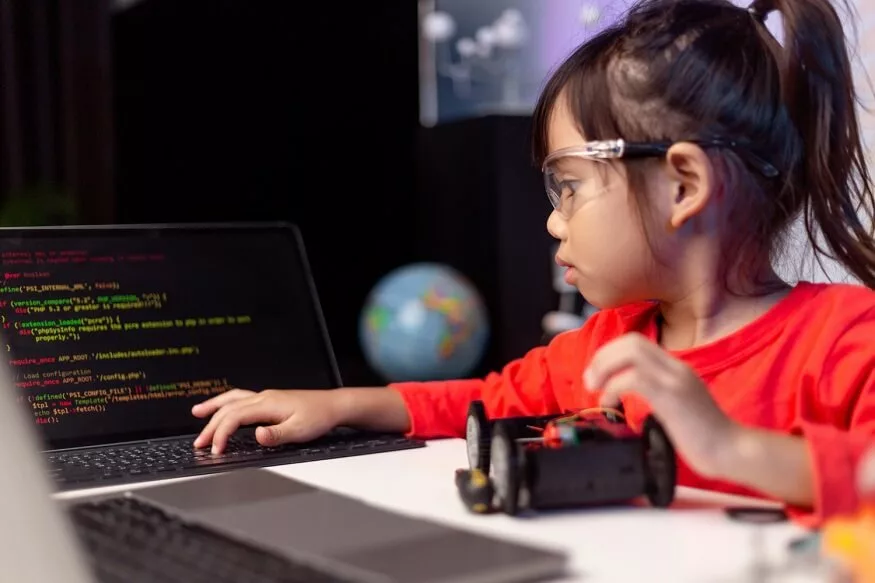The journey of a child’s education is a pivotal one, laying the foundation for a lifetime of learning. Two prominent paths in the early stages of education are preschooling and homeschooling, each offering a unique approach to nurturing young minds. In this blog, we will delve into the distinct characteristics, advantages, and considerations associated with preschool education and homeschooling.
What is Preschool Education
Preschool education refers to the early childhood educational program designed for children before they enter formal schooling, usually around the ages of three to five years old. It is an essential phase of early childhood education that aims to prepare young children for the academic, social, and emotional demands of primary school. The focus of preschool education goes beyond mere babysitting; it involves intentional activities and experiences designed to promote holistic development in various areas.
Preschools can take various forms, including private or public institutions, daycare centers, and programs affiliated with elementary schools. The specific curriculum and approach may vary, but the overarching goal is to provide a nurturing and educational environment that supports a child’s early development.
Characteristics of Preschool Education
- Early Learning Skills
- Socialisation
- Structured Play
- Language Development
- Cognitive Development
- Emotional Development
- Preparation for Formal Schooling
Also Read: Benefits of Mind Mapping for Learning and Creativity For Preschoolers
What Is Homeschooling
Homeschooling is an educational approach where parents take the primary responsibility for their children’s education, instead of sending them to a traditional public or private school. In homeschooling, parents serve as the primary educators, overseeing and facilitating their children’s learning at home. This approach allows for a more personalised and flexible educational experience tailored to the individual needs, interests, and learning styles of each child.
It’s important to note that homeschooling regulations vary widely by region, and families considering homeschooling should be aware of and comply with local laws and requirements. Homeschooling can be a rewarding educational choice for many families, but it also requires commitment, time, and resources from parents.
Characteristics of Homeschooling
- Parental Involvement
- Flexible Schedule
- Customised Curriculum
- Individualised Pace
- Adaptable educational setting
- Emphasis on Real-Life Learning
- Closer Family Bonds
- Incorporation of Values and Beliefs
- Adaptation to Learning Styles
- Freedom from Standardised Testing
Also Read: What Should Be The Goals for Preschool Children?
Preschooling Vs. Homeschooling: Weighing the Considerations
Still confused about what to choose pre schooling vs homeschooling? Here are some differences
Socialisation
- Preschooling: Offers structured social interactions with peers, fostering early friendships and group dynamics.
- Homeschooling: Requires intentional efforts to create social opportunities through playgroups, community activities, and extracurriculars.
Educational Approach
- Preschooling: Follows a structured curriculum with a focus on early academic skills and social development.
- Homeschooling: Allows for a personalised approach, tailoring lessons to a child’s interests and adapting to their unique learning style.
Family Involvement
- Preschooling: Limited involvement of parents in daily education, with updates provided through parent-teacher interactions.
- Homeschooling: Direct involvement of parents in daily learning activities, fostering a close-knit educational journey.
Flexibility
- Preschooling: Follows a fixed schedule and academic calendar.
- Homeschooling: Offers flexibility in scheduling, allowing for vacations, extended exploration of topics, and adapting to the family’s rhythm.
Resource Allocation
- Preschooling: Requires financial investment for tuition, uniforms, and other associated costs.
- Homeschooling: Involves a financial investment in educational materials, but the absence of tuition fees may be economically advantageous.
Individualised Pace
- Preschooling: Typically follows a group-paced learning model, where the entire class progresses together, potentially leaving some children behind or holding others back.
- Homeschooling: Allows for a more individualised pace of learning, enabling children to progress at their own speed and delve deeper into subjects of interest.
Learning Environment
- Preschooling: Involves a classroom setting with a designated learning space, providing a structured and formal environment.
- Homeschooling: Offers a variety of learning environments, from home-based setups to outdoor settings, allowing for a more adaptable and comfortable atmosphere.
Tailoring to Learning Styles
- Preschooling: Generally employs a one-size-fits-all teaching approach, which may not cater to the diverse learning styles of all children in the class.
- Homeschooling: Permits customisation of teaching methods to match a child’s preferred learning style, enhancing their understanding and retention of information.
Curriculum Control
- Preschooling: Curriculum is predetermined by the educational institution or government standards, leaving little room for adjustments based on individual needs.
- Homeschooling: Provides the flexibility to choose or even create a curriculum tailored to the child’s interests, emphasising a more holistic and meaningful learning experience.
Exposure to Diverse Perspectives
- Preschooling: Exposes children to a diverse group of peers, fostering cultural awareness and social understanding.
- Homeschooling: Requires intentional efforts by parents to expose children to various perspectives through community engagements, field trips, and other activities.
Teacher-Student Ratio
- Preschooling: Involves a larger teacher-student ratio, potentially limiting the amount of individual attention each child receives.
- Homeschooling: Offers a low teacher-student ratio, allowing for more personalised attention and a deeper understanding of the child’s strengths and weaknesses.
Assessment and Feedback
- Preschooling: Typically involves standardised assessments and periodic parent-teacher meetings to discuss a child’s progress.
- Homeschooling: Enables continuous assessment and immediate feedback, facilitating a dynamic and responsive approach to the child’s educational needs.
Also Read: Preschool Learning Activities For Kids To Become Independent
Preschooling Vs. Homeschooling: Choosing the Path that Fits
In the preschooling vs. homeschooling debate, there is no one-size-fits-all answer. The decision ultimately hinges on the unique needs, preferences, and circumstances of each family. Preschool education offers a structured and social learning environment, while homeschooling provides flexibility, customisation, and a more intimate family-centric approach.
Parents must consider factors such as their child’s personality, learning style, and the family’s values and lifestyle when making this crucial decision. Some families may even find a hybrid approach that combines aspects of both preschooling and homeschooling to be the most suitable for their circumstances.
Also Read: Starting Handwriting For Preschoolers: What’s Normal, What’s Not
In the end, what matters most is creating an environment where a child can thrive, learn, and develop into a well-rounded individual. Whether within the walls of a preschool classroom or the comfort of the family home, the goal remains the same: to lay the groundwork for a lifelong love of learning.
EuroSchool offers a structured environment with a focus on social development and early academics. We lay emphasis on holistic development, encompassing not only academic excellence but also the development of social, emotional, and physical skills.










